Church Saint Andre in Saint-Rambert sur Loire
 With
the origin, Holy Rambert, a Roman village of the name of Occiacum, was
given to the Abbey of Island-Bores. The monks founded a priory and
renamed the place Saint-Andre-of-Olmes.
With
the origin, Holy Rambert, a Roman village of the name of Occiacum, was
given to the Abbey of Island-Bores. The monks founded a priory and
renamed the place Saint-Andre-of-Olmes.
In 1078, when the relics of
Rambert Saint were brought, the village took its final name, and was
then an important place of pélerinage.
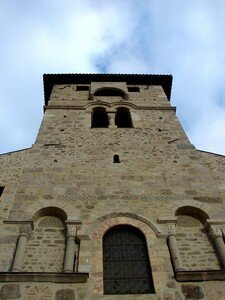 Built
on a hillock dominating the plain and the river, Saint Rambert was,
with the Middle Ages, surrounded by 2 enclosing walls of which there
remain some elements today.
Built
on a hillock dominating the plain and the river, Saint Rambert was,
with the Middle Ages, surrounded by 2 enclosing walls of which there
remain some elements today.
 The
vault Saint Jean probably dates from VIIème or VIIIème century. It was
hastily high by the monks, close to the Priory, while waiting for that
the large church prieurale and conventual was built. It was discovered
in the ground of the vault of many bodies buried following an epidemic
of plague which struck the village with the Middle Ages.
The
vault Saint Jean probably dates from VIIème or VIIIème century. It was
hastily high by the monks, close to the Priory, while waiting for that
the large church prieurale and conventual was built. It was discovered
in the ground of the vault of many bodies buried following an epidemic
of plague which struck the village with the Middle Ages.
“It was
used to the twelve monks but also made it possible to receive there the
workmen occupied with the construcion of the church.
In the same
way, monks and churls were to meet there to request together in VIIème
century, under the wood vault and on the steps of a wood furnace
bridge, for the success of work and the company " (cf Signerin abbot).
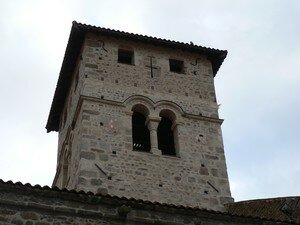 The
priory, depend on the Island Beard, close to Lyon, is quoted as of Xème
century. But the tower of the current church, at the origin tower of
defense, offers the characteristic to have very many Gallo-Roman
remains encrusted in its frontage (stones, columns, cippes or furnace
bridges) which let foresee the existence of a pagan temple former to
the foundation of the church. These vestiges in re-employment are the
last witnesses of Occiacum.
The
priory, depend on the Island Beard, close to Lyon, is quoted as of Xème
century. But the tower of the current church, at the origin tower of
defense, offers the characteristic to have very many Gallo-Roman
remains encrusted in its frontage (stones, columns, cippes or furnace
bridges) which let foresee the existence of a pagan temple former to
the foundation of the church. These vestiges in re-employment are the
last witnesses of Occiacum.
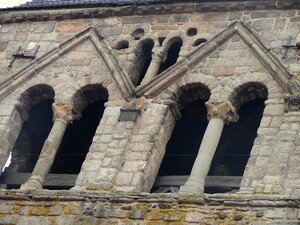 The
left bank took the name of Saint-Andre-of-Olmes when twelve monks
Benedictines depending on the monastery of the lle Barbe settled in
VIIIème century (between 603 and 608) and built there initially the
vault which is mentioned under the name of Midsummer's Day vault since
1307. Another vault, under the patronage of Saint-Côme is quoted as of
971. The Midsummer's Day vault, beside the church, was used thereafter
as baptistry until 1828. As for the cloister, it is on the ruins of a
Roman temple, as already wrote it to us, than the monks undertook to
raise it. They initially dedicated it to Saint-Andrew. It is only from
1078 that priory, and the city with him, took the name of
Saint-Rambert. Quite simply because the relics of the Saint were
brought there.
The
left bank took the name of Saint-Andre-of-Olmes when twelve monks
Benedictines depending on the monastery of the lle Barbe settled in
VIIIème century (between 603 and 608) and built there initially the
vault which is mentioned under the name of Midsummer's Day vault since
1307. Another vault, under the patronage of Saint-Côme is quoted as of
971. The Midsummer's Day vault, beside the church, was used thereafter
as baptistry until 1828. As for the cloister, it is on the ruins of a
Roman temple, as already wrote it to us, than the monks undertook to
raise it. They initially dedicated it to Saint-Andrew. It is only from
1078 that priory, and the city with him, took the name of
Saint-Rambert. Quite simply because the relics of the Saint were
brought there.
 The
legend, told many times, us says that the relics of Rambert,
assassinated on June 13, 675 by the sicaires of Ebroin (mayor of the
Palate), were kept with the monastery of Saint-Domitien, to Saint
Rambert in Bugey. Well far from thus Drill, beyond Lyon, until the New
Year's Day 1078 when a man saw it appearing in dream to order to him to
transport his remainders of Bugey Drill some! And here is our man who
removed the bones of Rambert (and Domitien, as long as to make) hides
them in bags of fabric and took the way of Saint-Andrew. In a forest,
it met the count Guillaume de Forez (or Widelin) with whom it told his
adventure and revealed the contents of his burden. Guillaume took along
our man in his residence and his wife, beautiful Vandalmonde, left a
beautiful cover her sideboards to hide the relics there. And a merry
procession took the way of Saint-Andrew where everyone, including water
of the Loire to the “Ford of the Rock”, made a guard of honour to the
relics of Rambert Saint and Domitien Saint.
(http://www.forez-info.com/encyclo.php)
The
legend, told many times, us says that the relics of Rambert,
assassinated on June 13, 675 by the sicaires of Ebroin (mayor of the
Palate), were kept with the monastery of Saint-Domitien, to Saint
Rambert in Bugey. Well far from thus Drill, beyond Lyon, until the New
Year's Day 1078 when a man saw it appearing in dream to order to him to
transport his remainders of Bugey Drill some! And here is our man who
removed the bones of Rambert (and Domitien, as long as to make) hides
them in bags of fabric and took the way of Saint-Andrew. In a forest,
it met the count Guillaume de Forez (or Widelin) with whom it told his
adventure and revealed the contents of his burden. Guillaume took along
our man in his residence and his wife, beautiful Vandalmonde, left a
beautiful cover her sideboards to hide the relics there. And a merry
procession took the way of Saint-Andrew where everyone, including water
of the Loire to the “Ford of the Rock”, made a guard of honour to the
relics of Rambert Saint and Domitien Saint.
(http://www.forez-info.com/encyclo.php)
 On
the first floor of the tower of the church Saint Andre, one finds a
room arched in semicircular arch, where the tomb of Rambert Saint was
placed, in a broad niche of 2m40. So that the faithful ones can ravel
in this narrow space, two staircases served the room, bored in the
thickness of the walls northern and southern. One finds the same
configuration in the crypts of pilgrimage, and the church of Morenita,
in Montserat. The two staircases always exist but their entry was
stopped.
On
the first floor of the tower of the church Saint Andre, one finds a
room arched in semicircular arch, where the tomb of Rambert Saint was
placed, in a broad niche of 2m40. So that the faithful ones can ravel
in this narrow space, two staircases served the room, bored in the
thickness of the walls northern and southern. One finds the same
configuration in the crypts of pilgrimage, and the church of Morenita,
in Montserat. The two staircases always exist but their entry was
stopped.

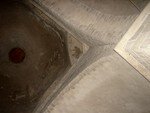 The
chorus comprises 4 enormous pillars charged to support the bell-tower.
It is arched of an octagonal cupola including/understanding 4 horns
having an acoustic role.
The
chorus comprises 4 enormous pillars charged to support the bell-tower.
It is arched of an octagonal cupola including/understanding 4 horns
having an acoustic role.
 In
the vault of right-hand side, a statue of virgin, referring to the
black virgins, takes care on the church. It is the reproduction of the
one of the virgins of the doors of the city:
In
the vault of right-hand side, a statue of virgin, referring to the
black virgins, takes care on the church. It is the reproduction of the
one of the virgins of the doors of the city:
the door of the Frankness, carries interior enclosure, where a reproduction of “Notre-Dame of the door of Frankness is” (the original one out of wood of drowning is with the museum) holds its name of the right of asylum from which the delinquents profited who managed to enter the enclosure of the priory. The city comprised four other doors, opening the borough: the door of Bost (or of Wood?) who led towards the south, Chambles and the Hermitage of Notre-Dame de Grâces, the door of Poyet in Saint-Marcellin cheese direction Drill some and of Auvergne, the door of Borough-Chorier which led to the cemetery of pestiférés. The latter was thus kept by Notre-Dame de Bon Help. The door of Pre-Fangéat carried out in direction of the Loire.
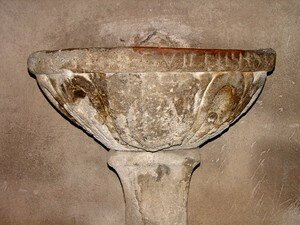 The
marble stoup which one finds close to the chorus, on the left, behind
one of the central pillars, is classified historic building. According
to the legend, it would have been used to collect the blood of the
sacrifices in the honor of the pagan divinities. It goes back to one
time former to the VII ème century.
The
marble stoup which one finds close to the chorus, on the left, behind
one of the central pillars, is classified historic building. According
to the legend, it would have been used to collect the blood of the
sacrifices in the honor of the pagan divinities. It goes back to one
time former to the VII ème century.
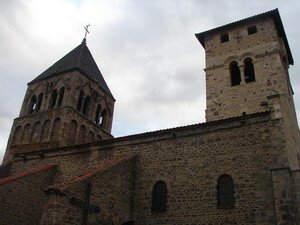 The
central apse dates from the beginning of the XII ème century. It is
slightly tilted on the left compared to the central axis of the great
nave. Undoubtedly so that one reminds the dedication Saint Andre. The
angle would have to be calculated.
The
central apse dates from the beginning of the XII ème century. It is
slightly tilted on the left compared to the central axis of the great
nave. Undoubtedly so that one reminds the dedication Saint Andre. The
angle would have to be calculated.
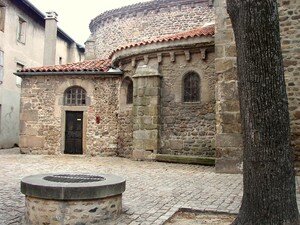 On the left side of the church, behind the vault Jean Saint, an old well is, undoubtedly that which was used to the good monks.
On the left side of the church, behind the vault Jean Saint, an old well is, undoubtedly that which was used to the good monks.
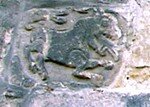 The
stones deliver a message to us. We find here the symbols used in
crowned architecture. On the northern door of Saint Andre, a “lion”
keeps the access. Funny of lion…
The
stones deliver a message to us. We find here the symbols used in
crowned architecture. On the northern door of Saint Andre, a “lion”
keeps the access. Funny of lion…
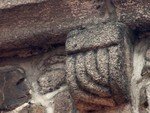
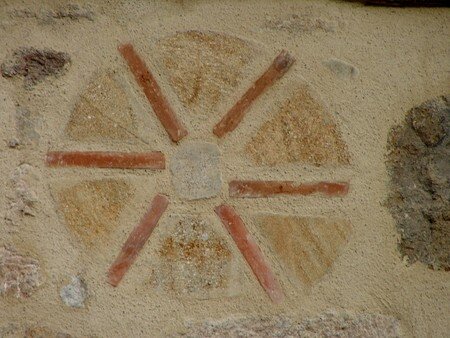 Other
stones speak to us: stars with 6 or 8 branches, “candlestick” with 4
branches, perhaps indicating the number of currents acquifères passing
under the church…
Other
stones speak to us: stars with 6 or 8 branches, “candlestick” with 4
branches, perhaps indicating the number of currents acquifères passing
under the church…

/https%3A%2F%2Fprofilepics.canalblog.com%2Fprofilepics%2F1%2F1%2F116167.jpg)
/https%3A%2F%2Fstorage.canalblog.com%2F49%2F16%2F312499%2F14620054_o.jpg)
/https%3A%2F%2Fstorage.canalblog.com%2F53%2F18%2F312499%2F14151229_o.jpg)
/https%3A%2F%2Fstorage.canalblog.com%2F07%2F05%2F312499%2F14149867_o.jpg)
/https%3A%2F%2Fstorage.canalblog.com%2F11%2F35%2F312499%2F14149307_o.jpg)
/https%3A%2F%2Fstorage.canalblog.com%2F90%2F14%2F312499%2F14125247_o.jpg)

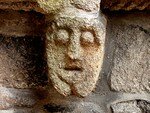

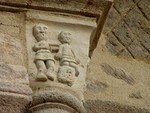


/https%3A%2F%2Fstorage.canalblog.com%2F12%2F98%2F137895%2F6624411_p.jpg)
/https%3A%2F%2Fstorage.canalblog.com%2F34%2F82%2F137895%2F27207854_p.jpg)
/https%3A%2F%2Fstorage.canalblog.com%2F32%2F37%2F137895%2F15872299_p.jpg)
/https%3A%2F%2Fstorage.canalblog.com%2F37%2F81%2F137895%2F15879822_p.jpg)